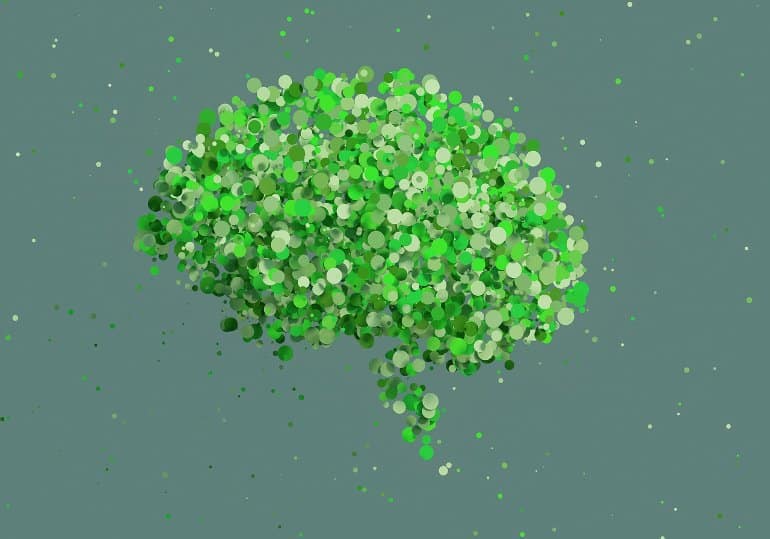Summary: In patients with cognitive decline, the cerebral spinal immune system is dramatically altered. The findings shed light on how inflammation and the immune system play a role in neurodegenerative diseases like Alzheimer’s.
Source: Northwestern University
The reason your three-pound brain doesn’t feel heavy is because it floats in a reservoir of cerebrospinal fluid (CSF), which flows in and around your brain and spinal cord. This liquid barrier between your brain and skull protects it from a hit to your head and bathes your brain in nutrients.
But the CSF has another critical, if less known, function: it also provides immune protection to the brain. Yet, this function hasn’t been well studied.
A Northwestern Medicine study of CSF has discovered its role in cognitive impairment, such as Alzheimer’s disease. This discovery provides a new clue to the process of neurodegeneration, said study lead author David Gate, assistant professor of neurology at Northwestern University Feinberg School of Medicine.
The study will be published Dec. 13 in Cell.
The study found that, as people age, their CSF immune system becomes dysregulated. In people with cognitive impairment, such as those with Alzheimer’s disease, the CSF immune system is drastically different from healthy individuals, the study also discovered.
“We now have a glimpse into the brain’s immune system with healthy aging and neurodegeneration,” Gate said. “This immune reservoir could potentially be used to treat inflammation of the brain or be used as a diagnostic to determine the level of brain inflammation in individuals with dementia.”
“We provide a thorough analysis of this important immunologic reservoir of the healthy and diseased brain,” Gate said. His team is sharing the data publicly, and its results can be searched online.
To analyze the CSF, Gate’s team at Northwestern used a sophisticated technique called single-cell RNA sequencing. They profiled 59 CSF immune systems from a spectrum of ages by taking CSF from participants’ spines and isolating their immune cells.
The first part of the study looked at CSF in 45 healthy individuals aged 54 to 83 years. The second part of the study compared those findings in the healthy group to CSF in 14 adults with cognitive impairment, as determined by their poor scores on memory tests.
Gate’s team of scientists observed genetic changes in the CSF immune cells in older healthy individuals that made the cells appear more activated and inflamed with advanced age.
“The immune cells appear to be a little angry in older individuals,” Gate said. “We think this anger might make these cells less functional, resulting in dysregulation of the brain’s immune system.”

In the cognitively impaired group, inflamed T-cells cloned themselves and flowed into the CSF and brain as if they were following a radio signal, Gate said. Scientists found the cells had an overabundance of a cell receptor — CXCR6 — that acts as an antenna. This receptor receives a signal — CXCL16 — from the degenerating brain’s microglia cells to enter the brain.
“It could be the degenerating brain activates these cells and causes them to clone themselves and flow to the brain,” Gate said. “They do not belong there, and we are trying to understand whether they contribute to damage in the brain.”
Gate said his “future goal is to block that radio signal, or to inhibit the antenna from receiving that signal from the brain. We want to know what happens when these immune cells are blocked from entering brains with neurodegeneration.”
Gate’s laboratory will continue to explore the role of these immune cells in brain diseases like Alzheimer’s. They also plan to expand to other diseases, such as amyotrophic lateral sclerosis (ALS).
Funding: This work was in part supported by supported by a National Institute on Aging (NIA) grant A R01AG078713-01, a 10x Genomics Early Career Investigator Award, a National Institute of Neurologic Disease and Stroke K99/R00 Pathway to Independence Award NS112458-01A1, NIA R01AG045034 05, the NIA funded Stanford ADRC P50AG047366 and P30AG066515, R01AG048076, all of the National Institutes of Health.
Other support was from UC San Diego Shiley-Marcos grant ADRC P30 AG062429, and a pilot project through the Northwestern University ADRC 1P30AG072977-01. Other support was from an Irene Diamond Fund/AFAR Postdoctoral Transition Award in Aging, the Cure Alzheimer’s Fund, the Alzheimer’s Association ADSF-21-818117 and the NOMIS Foundation, NIA R01AG045034 05, the NIA funded Stanford ADRC P50AG047366 and P30AG066515, R01AG048076, UC San Diego Shiley-Marcos ADRC P30 AG062429, and a pilot project through the Northwestern University ADRC 1P30AG072977-01.
About this Alzheimer’s disease research news
Author: Marla Paul
Source: Northwestern University
Contact: Marla Paul – Northwestern University
Image: The image is in the public domain
Original Research: The findings will appear in Cell







